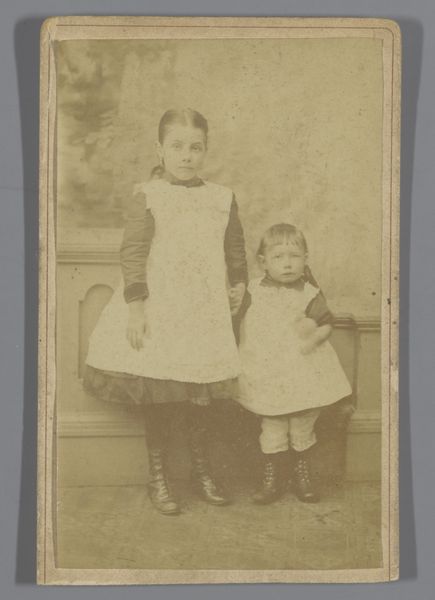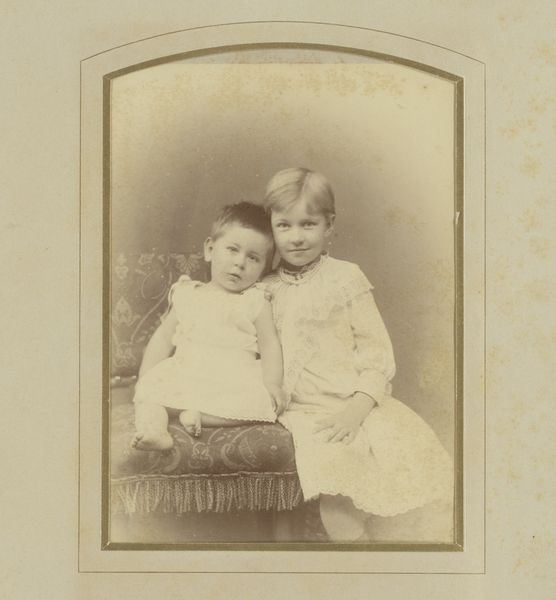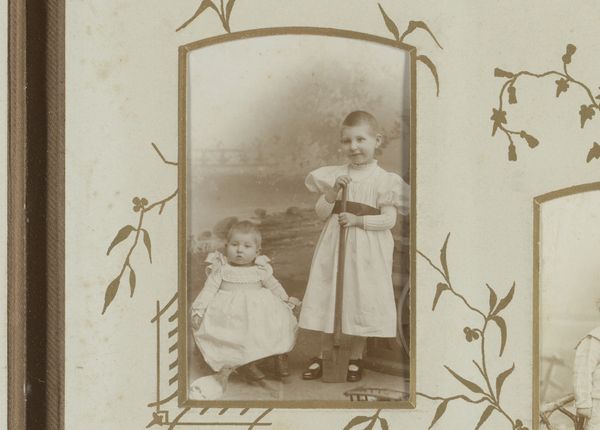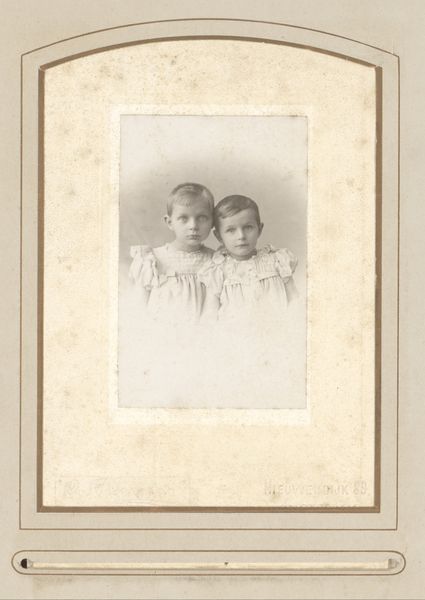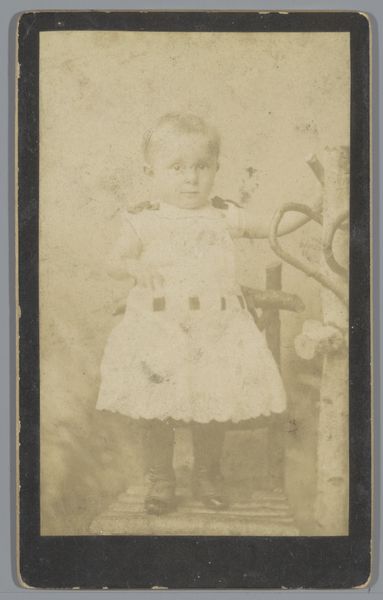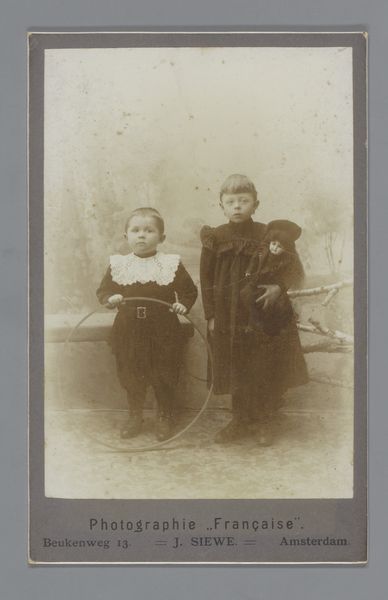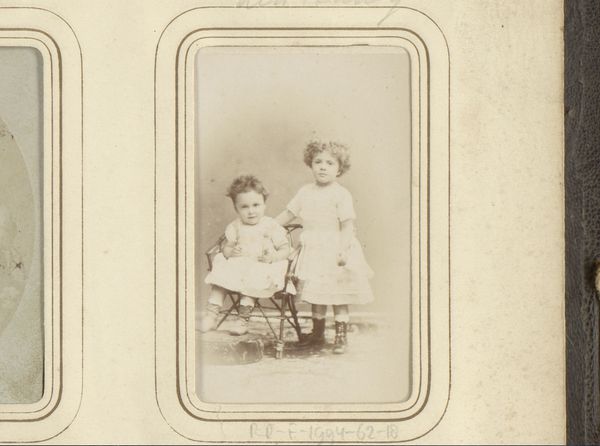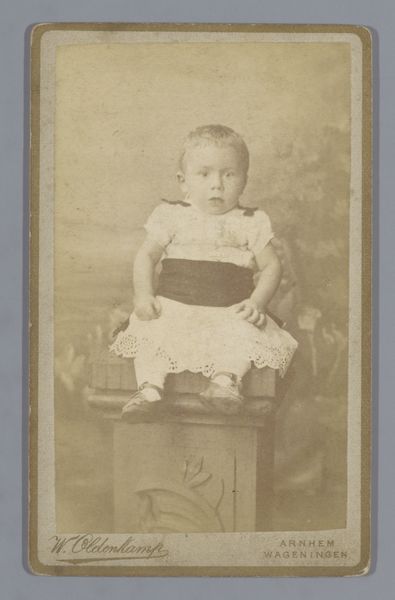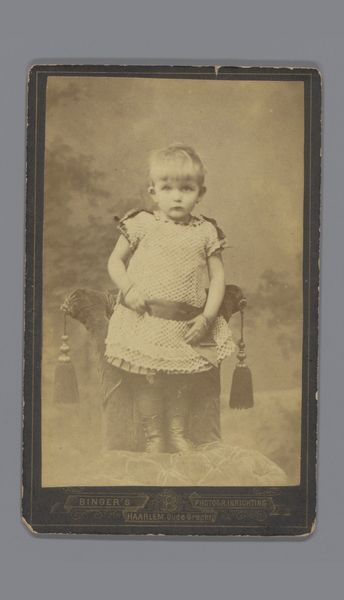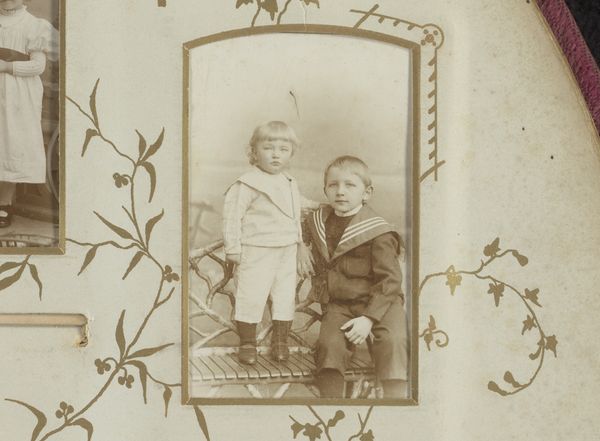
photography
#
portrait
#
photography
#
genre-painting
Dimensions: length 104 mm, width 63 mm
Copyright: Rijks Museum: Open Domain
Curator: This intriguing genre photograph, created by Pieter Siewers sometime between 1857 and 1898, presents us with a portrait of two unknown children. What are your initial thoughts on it? Editor: A certain melancholy clings to it, doesn't it? The faded sepia tone and the slightly blurred forms give the image an ethereal, almost dreamlike quality. Compositionally, it’s very simple: two figures against a plain backdrop. Curator: Indeed. Sepia, a process to yield stable photographs, would have given the children and viewers a sense of eternity from the very start, linking them, already, to cultural memory. It evokes notions of familial representation and continuity across generations, now tinged with poignant anonymity, given they're labelled only as 'unknown'. The shared aprons may reflect social status or family belonging. Editor: Precisely. Consider the light, though – diffuse and even. It softens the features, rendering them less defined, blurring specific details into archetypal ones, especially on the older child's face, where all seems concentrated into a solid gaze. We are encouraged to find more than merely individuality in this pair. Curator: We can delve further. Their direct gazes carry a cultural weight of childhood innocence in portraiture, prompting questions about social expectations and childhood representation during that era. Children often symbolize hope for the future but the sepia casts a sense of bygone days upon that symbolism. Editor: The formality of their attire and pose, juxtaposed with the innocence of their expressions, also speaks volumes. Perhaps an interesting semiotic interpretation might lie in tracing back the origin of the choice of simple shapes of clothes. Their clothes mark time through specific construction techniques—like the height of the waist, the width of the lapel and hem... Each part relates to larger aesthetic values and class distinction of the time, while making children appear eternal by rendering such temporal elements hard to read in the future. Curator: The photographer, Siewers, intentionally plays on such tropes, embedding multiple narratives that transcend individual stories. Editor: I concur. I think this portrait resonates beyond its aesthetic value, creating layers of inquiry. Curator: Agreed. Hopefully we’ve managed to peel some of those layers back.
Comments
No comments
Be the first to comment and join the conversation on the ultimate creative platform.
